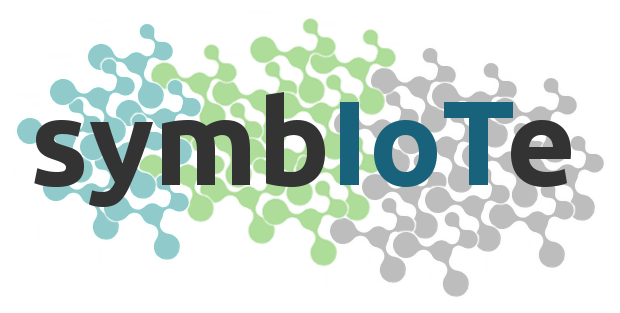Navigation auf uzh.ch
Navigation auf uzh.ch
The symbIoTe project comes to remedy the fragmented IoT ecosystem and environment by providing an abstraction layer for a “unified view” on various platforms and their resources so that platform resources are transparent to application designers and developers.

| Reference: |
EU Project, Grant No. 688156 |
| Source of funding: |
EU, overall 7.1 M€ |
| Project Duration: |
1.1.2016 - 13.12.2018 |
| Official Project Home Page: |
symbIoTe will achieve IoT platform federations by designing and implementing an Open Source mediation prototype. Thus, symbIoTe opens up the potential for innovative business models that are incrementally deployable. This is especially important for SMEs who are symbIoTe’s primary target group. Moreover, symbIoTe removes the strict separation between IoT islands to create an environment which matches the dynamicity of modern life and is helpful for various business, home and public infrastructure use cases.
The Communication Systems Group CSG of the Department of Informatics IfI at the University of Zurich UZH was invited to join symbIoTe in Fall 2017 for a year's duration to lead mainly as an expert within Work Package WP1 the work on "Business Models and Sustainability", which resulted in a joint project effort in the Deliverable D1.5 "Final Report on Business Models and Sustainability".
The Deliverable D1.5 presents a business model recommendation for symbIoTe including items for sustainability. Upon starting the IoT-ecosystem is analyzed leading to the impression of a fragmented situation in the current IoT domain, especially at data collection opportunities and applications using the data collected. Involved standards and services from collection points up to the application presenting the data are highly diverted. This fragmentation is also obvious when analyzing the stakeholders involved in the IoT. They can be grouped in different ways, but clearly have a concrete and well-defined own view of IoT individual incentives. All these facts make up for a good motivation for a solution like symbIoTe to overcome the current fragmented situation.
Therefore, symbIoTe within D1.5 specifies five use-cases covering typical application areas in today’s IoT and offers especially interoperability, security, and smart spaces. In order to develop a promising business model recommendation three different methods were applied to each use-case, namely CANVAS, Tussle Analysis, and Value-Network-Analysis. All three methods together investigate the Business-to-Business (B2) and Business-to-Customer (B2C) relationship to identify requirements, benefits, and incentives for stakeholders involved. As a result, needs are specified that have to be addressed by software and hardware, as well as from the finance sector. The investigations show that some global requirements and necessities can be agreed upon for all use-cases (e.g., cost structure or revenue streams), however particular findings are very specific to the individual use case. Thus, only use-case specific recommendations for a business model are possible and sensible. This also holds for sustainability items that are highly influenced by stakeholder requests (e.g., reducing times, increase quality of service, or reducing cost).
Inquiries may be directed to the local Swiss project management:
| Prof. Dr. Burkhard Stiller |
| University of Zürich, IFI |
| Binzmühlestrasse 14 |
| CH-8050 Zürich |
| Switzerland |
|
|
| Phone: +41 44 635 67 10 |
| Fax: +41 44 635 68 09 |